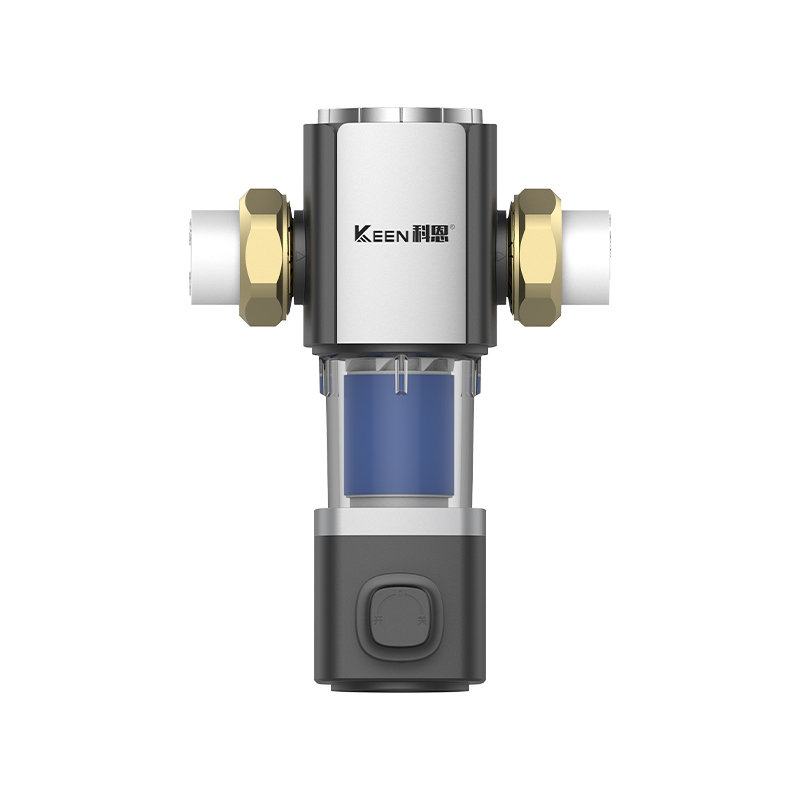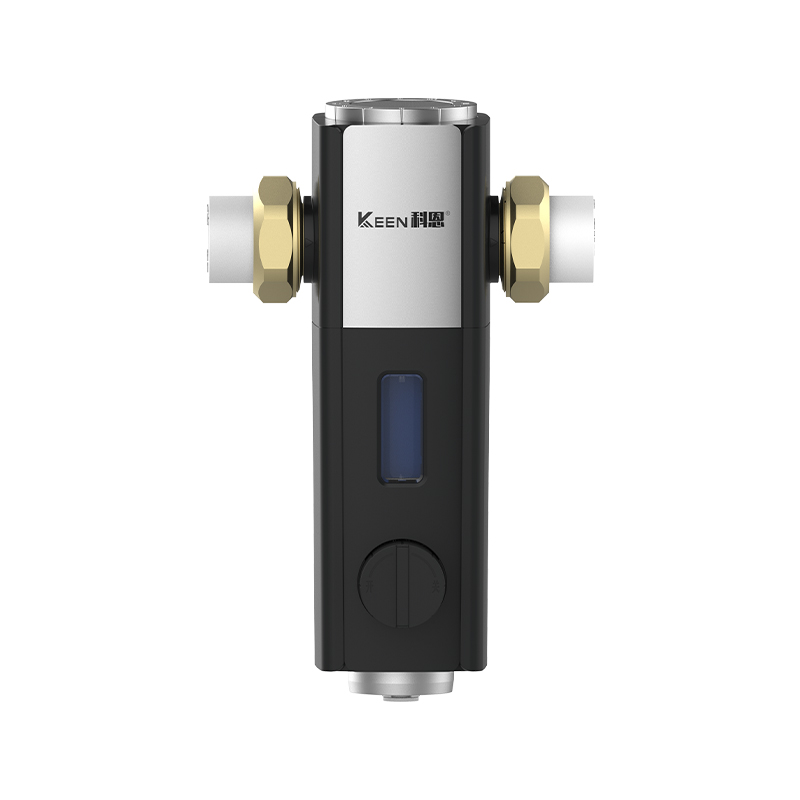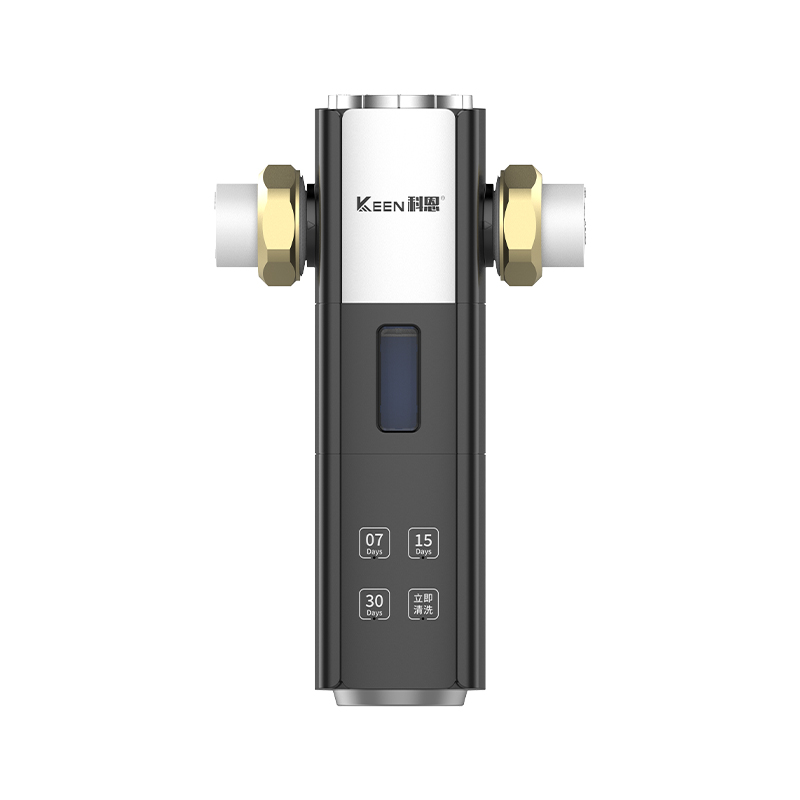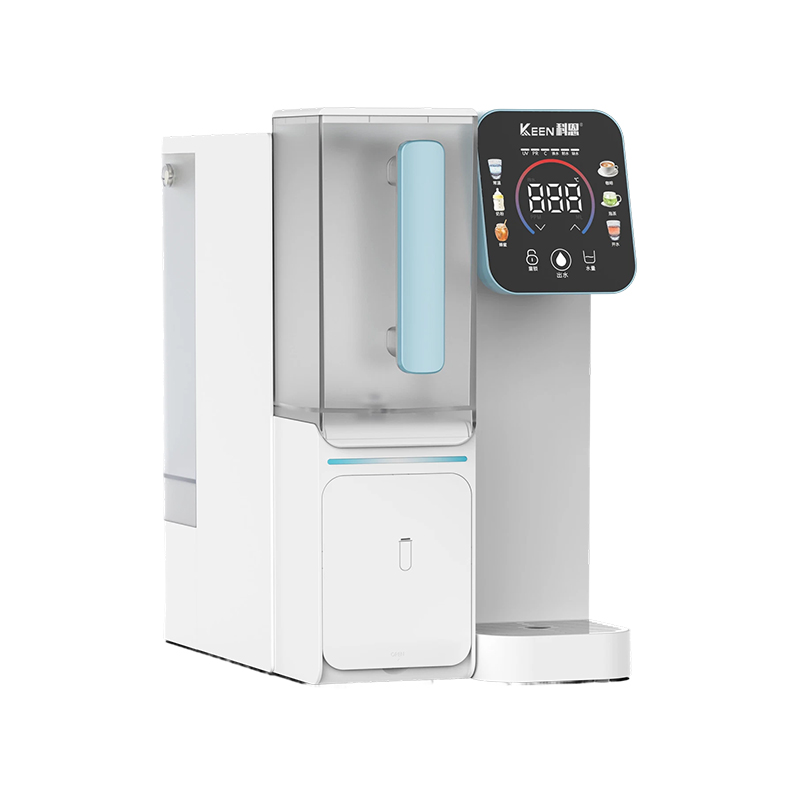How does the under kitchen water purifier perform under different water quality conditions?
Release Time : 2025-05-20
The performance of the under kitchen water purifier under different water quality conditions is one of the key factors to measure its performance and applicability. Due to the large differences in water sources in various places, including hardness, chlorine content, suspended solids, heavy metal content, and microbial contamination, the actual use effect of the water purifier will also vary accordingly. Therefore, understanding the operating characteristics of the water purifier in various water quality environments will help consumers choose the right product according to the water quality conditions in their own area.
In areas with better water quality, such as urban areas with a complete tap water treatment system and clean and stable water sources, the under kitchen water purifier mainly plays a role in further purification and improving the taste. At this time, the focus of the water purifier is to remove residual chlorine, odor and trace organic pollutants to make drinking water more sweet and delicious. In this type of environment, the filter life is relatively long, the maintenance frequency is low, and the overall use experience is relatively easy and smooth.
In areas with harder water or higher mineral content, the water purifier needs to have strong softening and filtering capabilities. Calcium and magnesium ions in water easily form scale, which not only affects the taste, but may also clog the filter element or reduce the filtration efficiency. In this case, a water purifier with a reverse osmosis (RO) membrane or a multi-stage composite filter element can play a greater role and effectively remove excess minerals and impurities in the water to avoid potential health effects caused by long-term drinking. However, this also means that the filter element replacement cycle will be shortened accordingly, and the later maintenance cost of the equipment will increase.
For tap water with high chlorine content or strong chemical treatment, the water purifier needs to focus on solving the problem of residual chlorine. Although chlorine is widely used for sterilization and disinfection, excessive intake may have adverse effects on the human body and affect the taste of water. Activated carbon filters are particularly important under such water quality conditions. They can efficiently adsorb residual chlorine and other volatile organic compounds, thereby improving the safety and comfort of drinking water. However, if the water contains more organic pollutants or pesticide residues, a single activated carbon layer may not be able to completely remove all harmful substances. At this time, a water purification device equipped with a higher-level filtration system should be selected.
In some areas with intensive industry or frequent agricultural activities, the water source may contain a certain amount of heavy metals, drug residues or other micro-pollutants. These substances are difficult to completely remove through conventional filtering methods and pose a potential threat to health. For such water quality conditions, large-capacity water purifiers with reverse osmosis technology or nanofiltration technology are more advantageous. They can achieve molecular-level filtration, intercept most harmful substances, and provide families with a purer source of drinking water.
In addition, in some areas, especially where groundwater is the main source of water supply, the content of elements such as iron, manganese, and sulfide in the water may be high, causing the water to turn yellow, have a peculiar smell, or even appear turbid. Faced with such water quality challenges, in addition to basic filtration, under kitchen water purifiers need to have stronger pretreatment capabilities, such as pre-precipitation, iron and manganese removal and other functional modules. Only in this way can we ensure that the subsequent filter element will not fail due to premature clogging and maintain the stable operation of the entire system.
It is worth noting that even in the same area, seasonal changes may also cause water quality fluctuations. For example, the sediment content increases during the rainy season, and the water temperature drops in winter, affecting the adsorption efficiency of some filter materials. Therefore, an excellent under kitchen water purifier should have a certain degree of adaptability and adjustment space. Users can adjust the filter combination or cleaning frequency according to the actual water quality to maintain the best water purification effect.
In summary, the performance of under kitchen water purifier under different water quality conditions is not static, but is affected by many factors. From the type of water source to the type of pollutants, to the changes in the use environment, different requirements will be put forward for its operation effect. Therefore, when purchasing a water purifier, you cannot make a decision based on brand or price alone, but should choose a suitable technical solution and product configuration based on the characteristics of local water quality. In this way, the value of the water purifier can be truly brought into play and the drinking water safety and health of family members can be guaranteed.
In areas with better water quality, such as urban areas with a complete tap water treatment system and clean and stable water sources, the under kitchen water purifier mainly plays a role in further purification and improving the taste. At this time, the focus of the water purifier is to remove residual chlorine, odor and trace organic pollutants to make drinking water more sweet and delicious. In this type of environment, the filter life is relatively long, the maintenance frequency is low, and the overall use experience is relatively easy and smooth.
In areas with harder water or higher mineral content, the water purifier needs to have strong softening and filtering capabilities. Calcium and magnesium ions in water easily form scale, which not only affects the taste, but may also clog the filter element or reduce the filtration efficiency. In this case, a water purifier with a reverse osmosis (RO) membrane or a multi-stage composite filter element can play a greater role and effectively remove excess minerals and impurities in the water to avoid potential health effects caused by long-term drinking. However, this also means that the filter element replacement cycle will be shortened accordingly, and the later maintenance cost of the equipment will increase.
For tap water with high chlorine content or strong chemical treatment, the water purifier needs to focus on solving the problem of residual chlorine. Although chlorine is widely used for sterilization and disinfection, excessive intake may have adverse effects on the human body and affect the taste of water. Activated carbon filters are particularly important under such water quality conditions. They can efficiently adsorb residual chlorine and other volatile organic compounds, thereby improving the safety and comfort of drinking water. However, if the water contains more organic pollutants or pesticide residues, a single activated carbon layer may not be able to completely remove all harmful substances. At this time, a water purification device equipped with a higher-level filtration system should be selected.
In some areas with intensive industry or frequent agricultural activities, the water source may contain a certain amount of heavy metals, drug residues or other micro-pollutants. These substances are difficult to completely remove through conventional filtering methods and pose a potential threat to health. For such water quality conditions, large-capacity water purifiers with reverse osmosis technology or nanofiltration technology are more advantageous. They can achieve molecular-level filtration, intercept most harmful substances, and provide families with a purer source of drinking water.
In addition, in some areas, especially where groundwater is the main source of water supply, the content of elements such as iron, manganese, and sulfide in the water may be high, causing the water to turn yellow, have a peculiar smell, or even appear turbid. Faced with such water quality challenges, in addition to basic filtration, under kitchen water purifiers need to have stronger pretreatment capabilities, such as pre-precipitation, iron and manganese removal and other functional modules. Only in this way can we ensure that the subsequent filter element will not fail due to premature clogging and maintain the stable operation of the entire system.
It is worth noting that even in the same area, seasonal changes may also cause water quality fluctuations. For example, the sediment content increases during the rainy season, and the water temperature drops in winter, affecting the adsorption efficiency of some filter materials. Therefore, an excellent under kitchen water purifier should have a certain degree of adaptability and adjustment space. Users can adjust the filter combination or cleaning frequency according to the actual water quality to maintain the best water purification effect.
In summary, the performance of under kitchen water purifier under different water quality conditions is not static, but is affected by many factors. From the type of water source to the type of pollutants, to the changes in the use environment, different requirements will be put forward for its operation effect. Therefore, when purchasing a water purifier, you cannot make a decision based on brand or price alone, but should choose a suitable technical solution and product configuration based on the characteristics of local water quality. In this way, the value of the water purifier can be truly brought into play and the drinking water safety and health of family members can be guaranteed.







